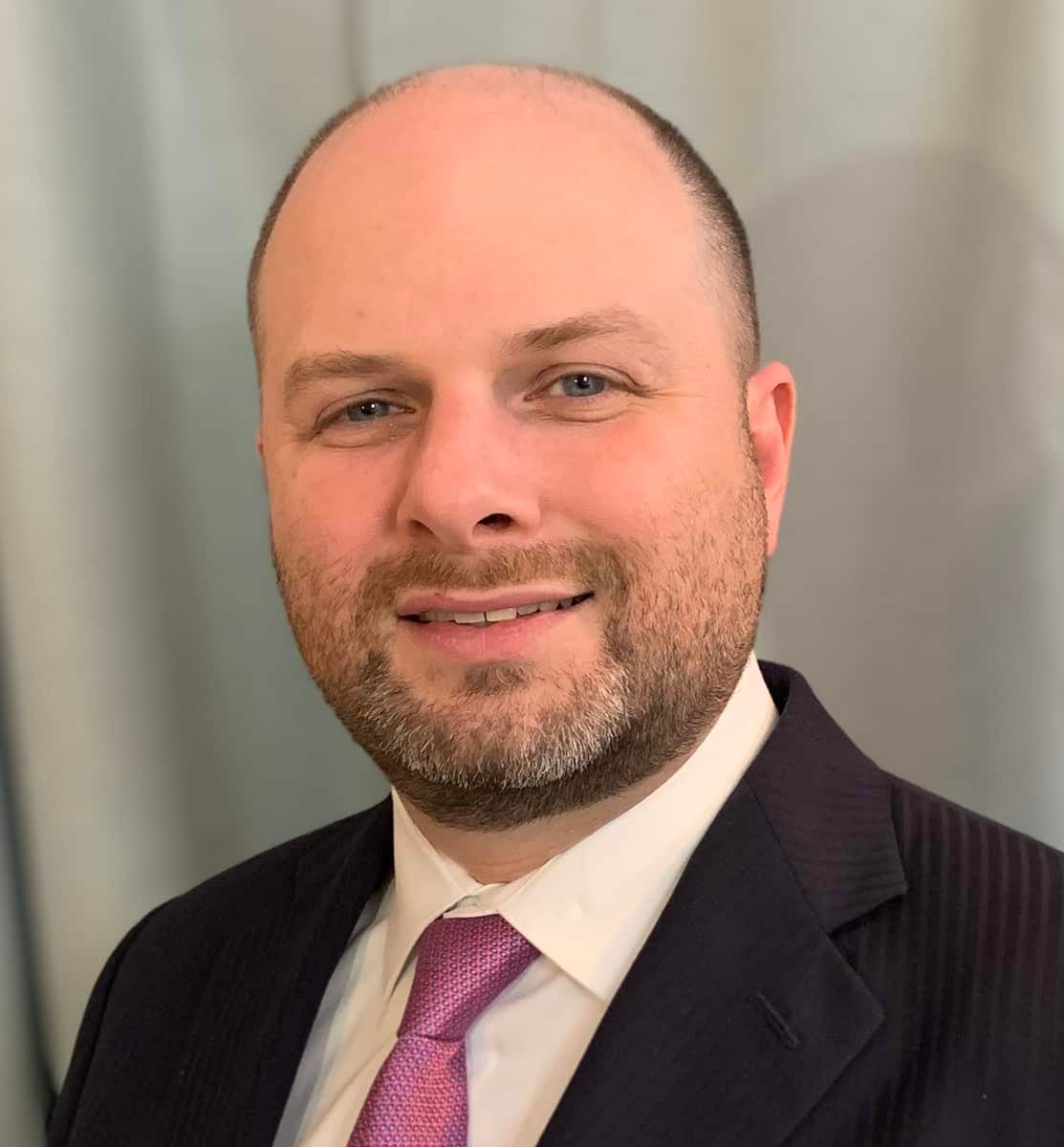The views expressed here are solely those of the authors and do not necessarily represent the views of FreightWaves or its affiliates. Jake Medwell, founding partner at 8VC, and Loren A. Smith Jr., president of Skyline Policy Risk Group, discuss key industry topics for this regular quarterly Q&A exclusively on FreightWaves.
By Jake Medwell and Loren Smith
JAKE MEDWELL: The chatter from DC this year has included a lot of talk about climate policy, energy and the environment. How much actual impact should folks be expecting? Is Congress ready to make a big move here?
LOREN SMITH: The important moves will come less from Congress and more from the regulators. Congress will probably end up chipping in more than $100 billion for a mix of clean energy tax credits, money for electric vehicle charging infrastructure and support for infrastructure “resilience.”
That level of funding is important, but note that it’s all “carrot” and no “stick.” Congress has a strong preference for playing good cop – it’s arguably why regulatory agencies exist at all. The regulators are the ones who will be tasked with new mandates to nudge companies to be greener. That’s important because over the long term, it’s the regulations that matter – even $100 billion is just a sugar high if it becomes that thing Congress did that one time back in 2021.
The exception, of course, is the one-time spending on EV charging infrastructure, which has long-term significance even if the funding dries up.
JAKE: So what changes are going to matter and for which industries?
LOREN: The two areas we’re watching closely are the electric vehicle shift and infrastructure policy itself, both of which are big for the freight industry.
JAKE: There’s a ton of activity around EVs, and not just ground vehicles either.
LOREN: Definitely! Let’s take EVs first. The Biden team is determined to use this four-year presidential term to cement a national shift from internal combustion engines to EVs. The main lever to do this is through Corporate Average Fuel Economy (CAFE) standards. CAFE is a set of rules aimed at imposing tougher fuel efficiency standards over time. Fuel economy is regulated by NHTSA (an agency within the U.S. Department of Transportation), but they typically partner with EPA. EPA uses its own authority under the Clean Air Act to regulate greenhouse gases.
The CAFE standards have been ratcheted up since the 1970s and are a big reason why automakers are now shifting away from ICE and towards EVs. You can only squeeze so much fuel efficiency out of gasoline before you reach diminishing returns on the economics.
JAKE: “This four-year presidential term” – so, by 2025, when Biden’s term ends?
LOREN: The plan is to put the rules in place by 2025, in case Democrats don’t hang onto the White House after the next election. The shift itself will be towards the end of the 2020s and through the 2030s. Automakers, like most heavy industry, take a multiyear approach. Tooling, training, process – all of these things require years of planning. GM targeting 2035, for instance, which not only allows for these things but also builds some flex into the schedule in case either the policy, the science or the consumer market changes. But by 2025, you can have a regulatory system in place that is much harder to alter and industrial processes will have likewise fixed in place to some extent.
JAKE: So we should expect a lot of motion between now and then.
LOREN: Yes, the first step, which NHTSA/EPA is trying to get done by the end of the year or early 2022, is to toughen the rules through 2026 for cars and light-duty trucks. The rules run in five-year chunks because that’s a limitation of the NHTSA statutory authority – they can only do five years at a time. Then they’ll turn their attention to writing the rules for the 2027-31 period and aim to have those final by 2024.
At the same time, the current rules for medium- and heavy-duty truck fuel efficiency run through 2028. So expect some work on those to also happen between now and 2025, although the schedule is a little less clear there. The economics of EV trucks are a little different – better in some ways, because you can have fleets that charge in fewer locations and fewer market participants, and tougher in other ways, as the battery technology is developing.
JAKE: Are there any caveats here? It seems like this could be a pretty solid glide path for EV adoption.
LOREN: It’s very doable, but there are a few kinks to be worked out. How these things develop over the next few years will tell us some things:
1) Rare earth elements. Upstream, battery production could get tricky. A lot of rare earth elements are needed for EV batteries, and this is one of the areas where friction between the U.S. and China matters. China controls a large part – upwards of 90% – of rare earth element production. Does the Biden administration signal an openness to more domestic mining? We expect that they will, but the devil is in the details.
2) Recycling. An EV battery is an environmentally tricky thing. Does the battery disposal and recycling industry expand in a way that keeps costs down for EVs at the consumer level? Again, the answer here is probably yes, but worth watching.
3) Grid power. This is a big one. A major part of the Biden administration’s agenda is reviving the Obama administration’s Clean Power Plan to replace fossil fuels with renewables – solar and wind energy. If, say, half of all cars on the road are going to move from ICE to EV, merely replacing the power from fossil fuel sources isn’t enough – the power produced by the grid may need to expand by 50%, or even more. Does nuclear play a role here? Will natural gas have a permanent role to play? Again, this is a solvable problem, but it does need to be solved.
4) Consumer acceptanceis still pretty low in the marketplace. This could change, which is why the success of the Ford F-150 Lightning (as one example) will be important.
JAKE: Big issues, but doable, like you said. What about on the infrastructure side?
LOREN: A buzzword you hear a lot is “resilience.” If we start to see large-scale shifts in the climate, whether in extreme weather or heat waves or in other areas, you’ve got to have highways, bridges and tunnels that are built to withstand it. This is an area where you see real potential for bipartisan action. If a lot of money gets put into physical infrastructure, expect a lot of strings attached to making sure that new construction is up to snuff. This could mean that individual projects get more expensive – potentially reducing the overall number of projects.
JAKE: Fewer projects isn’t great, but action, especially bipartisan action, sounds promising. So this could get done more easily? Our truckers need good roads, not to mention commuters, vacationers …
LOREN: I think whenever we finally get the next multiyear surface transportation bill – the Highway Bill it’s usually called – it will have resilience built into it. However, there’s a flipside here, which is “permitting.” The U.S. has had real problems in recent decades with approvals for even modest infrastructure projects. That’s because of the multiple political choke points you have to get through for the environmental impact statements and approvals at various levels of government.
JAKE: It can take a decade for a project to get the green light.
LOREN: Right. Both parties have wrestled with this. During the Obama administration, both of the major surface transportation highway bills that were enacted (in 2012 and 2015) contained important permitting reforms. However, Congress and the executive branch still have a lot of work to do to streamline the process. The next surface transportation bill that gets enacted, whether it’s in 2021, 2022 or 2023, will happen when the Republicans and the Democrats work out both the resilience question and the streamlining question. Moderate members support both items here, but as you can imagine, the more progressive members want to focus on resilience and the more conservative members want to focus on streamlining.
JAKE: So in our future we could see a lot more EVs and roads that are built faster and to higher standards?
LOREN: That’s the plan!
JAKE: I think we’ll close on that somewhat optimistic note. Thanks to our readers for following – and comments as always are welcomed.
ABOUT THE AUTHORS

Jake Medwell, founding partner of 8VC, focuses on both consumer and enterprise investments. A serial entrepreneur who has spent his life building and scaling companies, he also leads 8VC’s logistics and transportation focus. Prior to launching 8VC, Medwell co-founded Humin, a consumer mobile software company, where he built the engineering team and led growth. He also co-founded The Kairos Society, where he sits on the board of directors. While in college at the University of Southern California, he founded Sole Bicycle Co. and grew it into an industry leader. Most recently, he co-founded Operation Masks with partner Drew Oetting to help bring personal protective equipment to medical workers on the front line in the fight against COVID-19.

Loren A. Smith Jr. is the president of Skyline Policy Risk Group. From 2017 to 2021, he worked at the Department of Transportation as deputy assistant secretary for policy. There, his leadership included serving as DOT’s chief environmental review permitting officer; chair of the management team for the ROUTES Initiative on rural transportation; and as a member of the task force on regulatory reform, including leading efforts on supersonic aviation. From 2009 to 2016, he was an analyst for Capital Alpha Partners, a Washington-based research firm that studies public policy for investors. He specialized in transportation policy, particularly relating to autos and infrastructure, and published more than 500 research notes.







